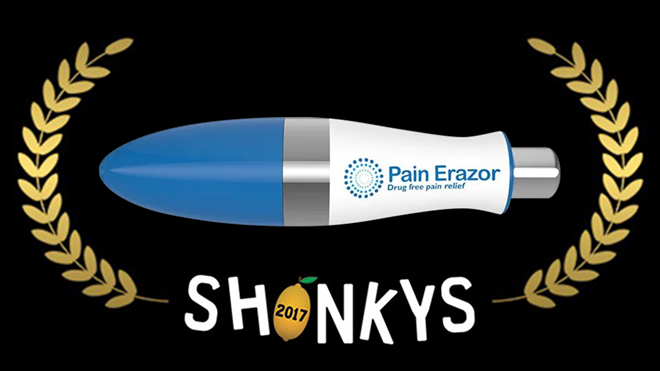Ads for the Pain Erazor pen claim it offers drug-free pain relief through "the science of electro-analgesia".
If you call the 1800 number advertised a "trained consultant" will call you back to discuss the details of the product, but not before they check if you'll be paying with Visa or MasterCard.
They promise that the Pain Erazor works on everyone (except for those with pacemakers or who are pregnant) for anything from two hours to two days after you discharge an electrical current onto your skin up to 40 times.
The Pain Erazor website claims the pen works by exerting pressure on a quartz crystal which produces a tiny electric charge.
Apparently this stimulates the body's endorphins to act as a natural painkiller.
In reality, it's an awful lot like the kind of devices you use to light your stovetop or barbecue.
Pain Erazor – CHOICE Shonky Awards 2017
Who needs clinical information?
The instruction booklet doesn't contain clinical information, but does include a testimonial by a motorcycle stuntman.
We asked a "trained consultant" on the phone if there were any clinical studies on the effectiveness of the device; we were told "it's more like acupuncture rather than a medical device".
Although electric currents are sometimes used for pain relief – a process called transcutaneous electrical nerve stimulation (TENS) – there's still a lack of good quality evidence and more studies are needed to prove effectiveness.
Our partners at Consumer NZ tested the Pain Erazor and found it delivered less energy than a TENS treatment session.
Dr Brad McKay, a Sydney-based GP, says that the Pain Erazor is probably good for lighting your stovetop but unlikely to be beneficial for pain.
"Any subjective decrease in pain is more likely to occur from sheer boredom after clicking the device 30 to 40 times, rather than from the device itself," he adds.
Join the Shonkys conversation

Talk about lemons... Share thoughts on this year's Shonky Awards with the CHOICE community forum.


